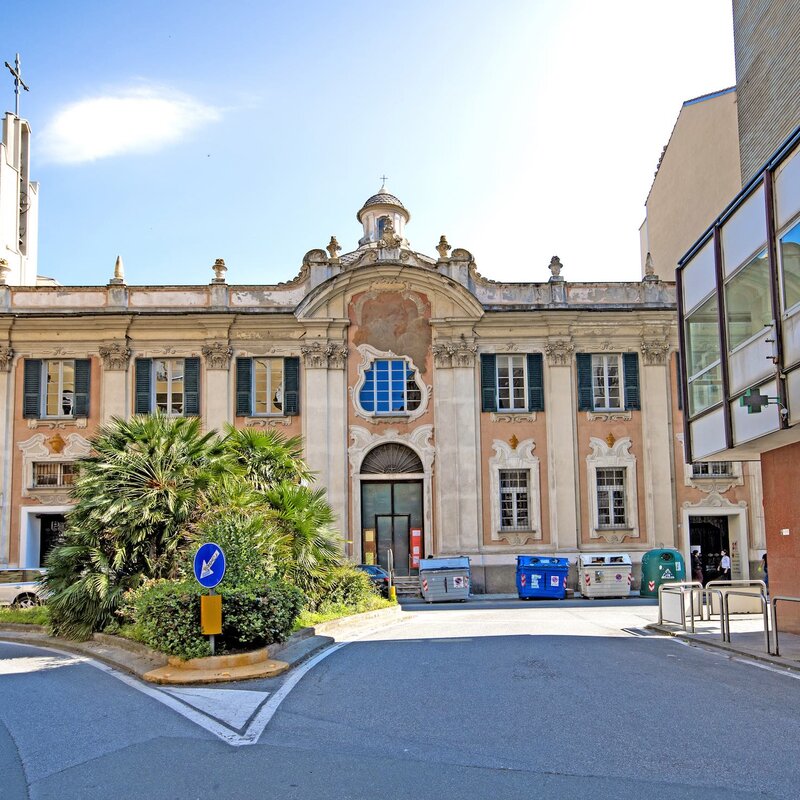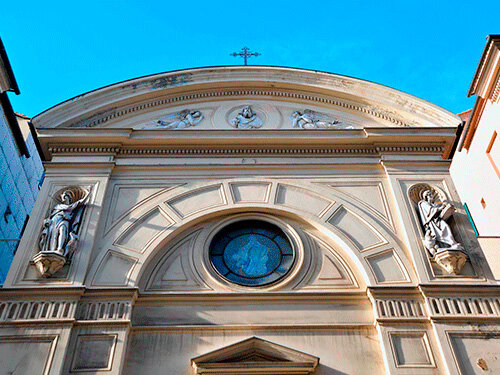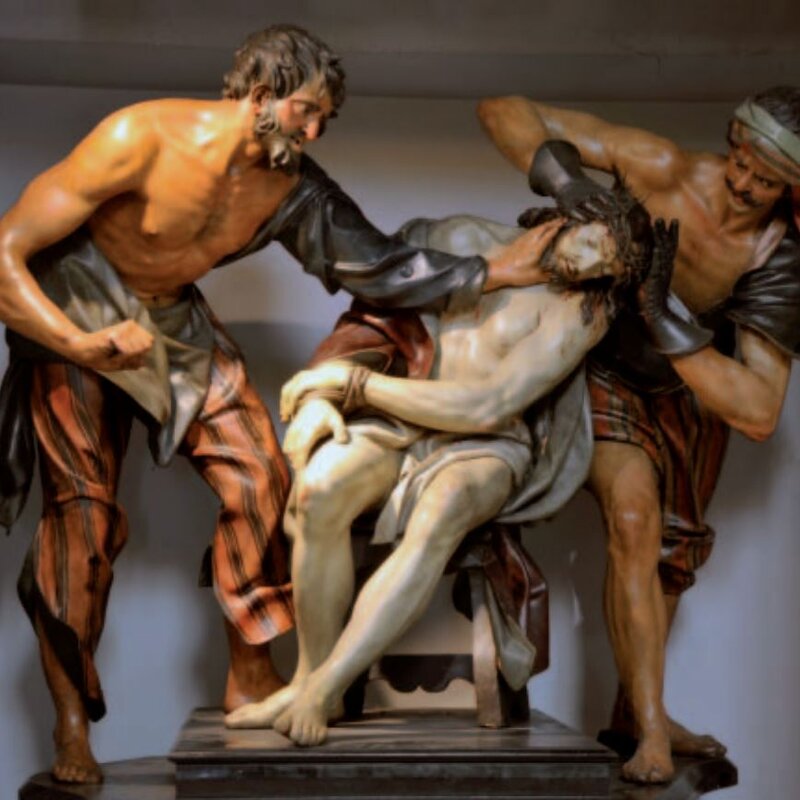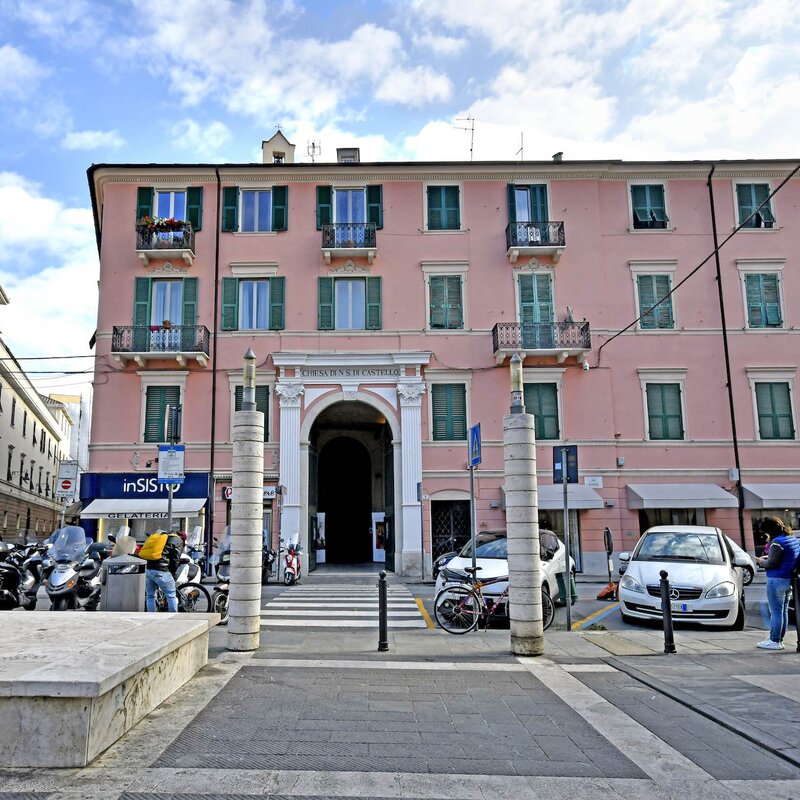Oratory of the Confraternity of Saint Dominic and the Risen Christ
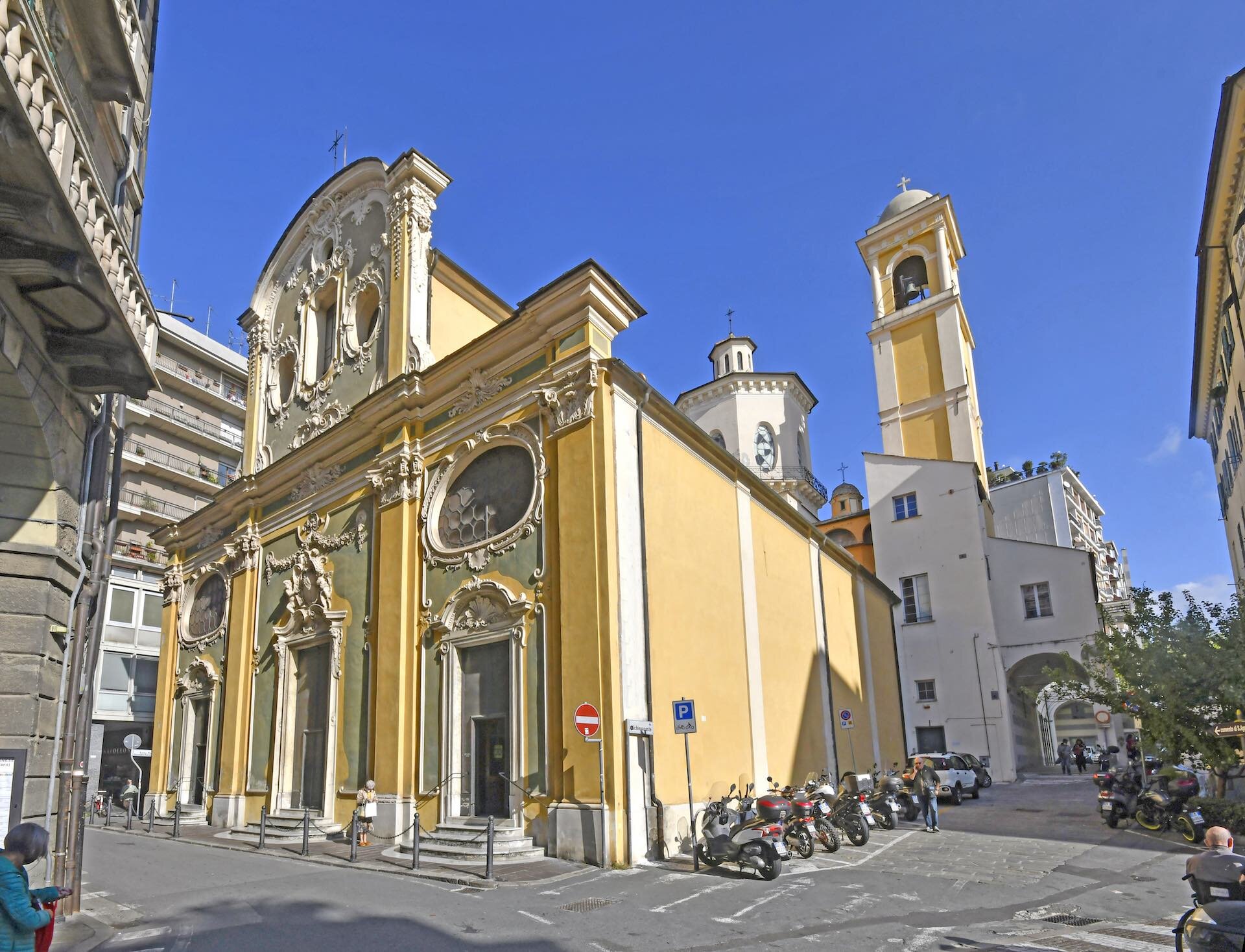
The history of this building is old and fascinating. It is inextricably linked to that of the Confraternities that are based in it and, moving further back in time, to that of the church of the Santissima Annunziata, which was originally an integral part of the monastery of the Augustinian nuns. In 1604, the works began for the construction of the church that would be used for the liturgies of the nuns.
On 13 June 1887, the nuns were transferred to a new location: Palazzo Gavotti di Legino. The nunnery was partly destroyed and partly converted into a school, while the church remained deconsecrated up until 1906, when it became the seat of the Confraternity of the Risen Christ. In 1908, the Confraternity of Saint Dominic also moved to the same building and the Oratory still hosts both confraternities.
Simple and streamlined, the main façade is embellished only with a few frescoes – dictating its visual rhythm – and a semi-elliptical window. Inside, the richly baroque decor is set off by a single-nave layout, enveloping visitors into a warm embrace and offering an extraordinary full-scope view. The entire Oratory is a glittering ensemble of stuccoes, frescoes, and polychrome marbles.
The interiors are further embellished with numerous art works, including, most importantly, an 18th century altar by Domenico Parodi, a processional float by Anton Maria Maragliano, and another one by Antonio Brilla. The two processional floats are especially notable: the first one, depicting an “Annunciation”, is considered to be one of the artist’s most remarkable works. The second one, “The Deposition of Christ in the Sepulchre”, weighing 1700 kilograms, is one of the heaviest floats still being carried in procession: 24 men are needed to lift it. The organ is also noteworthy: made in 1757 by the Concone brothers, it is still today played in religious music concerts.
